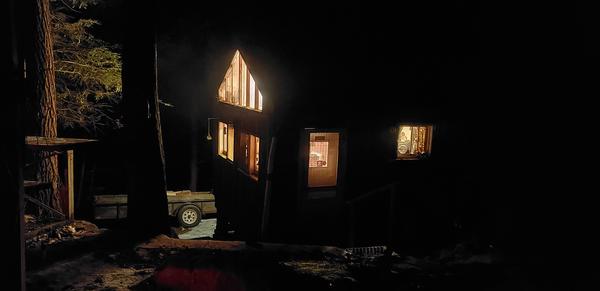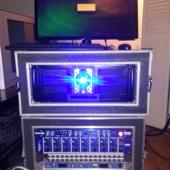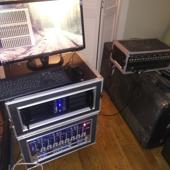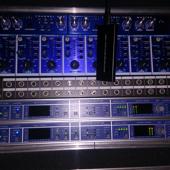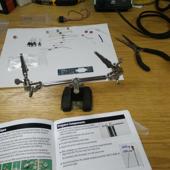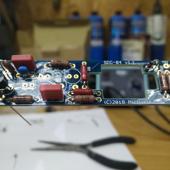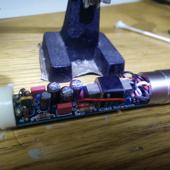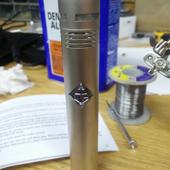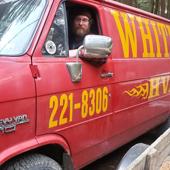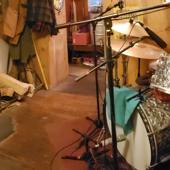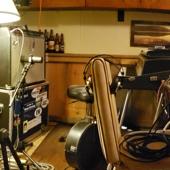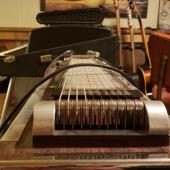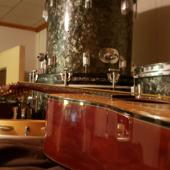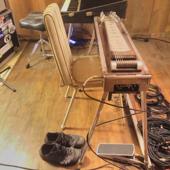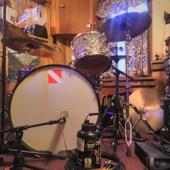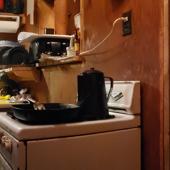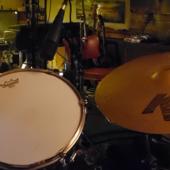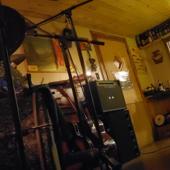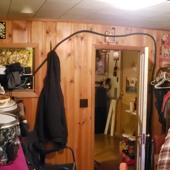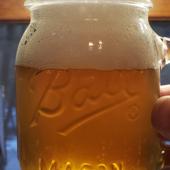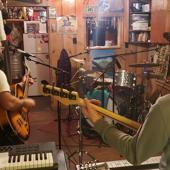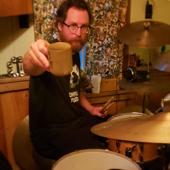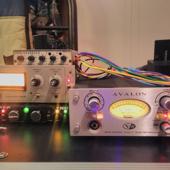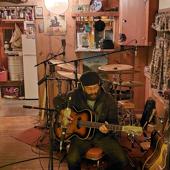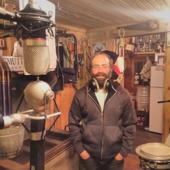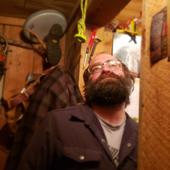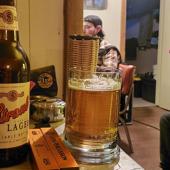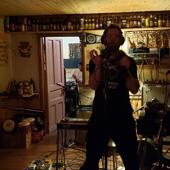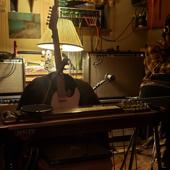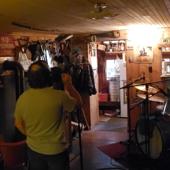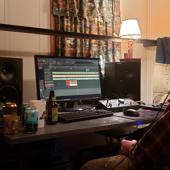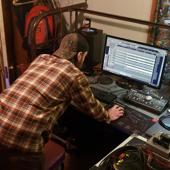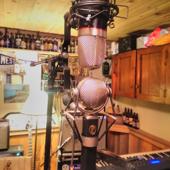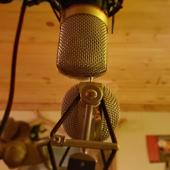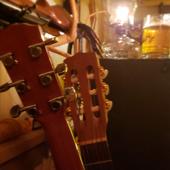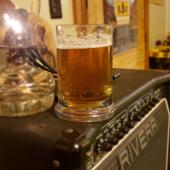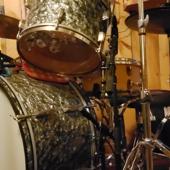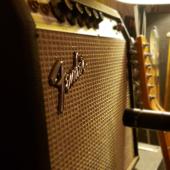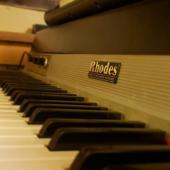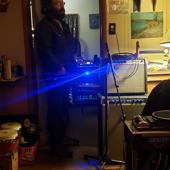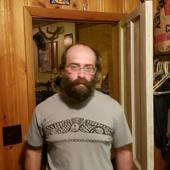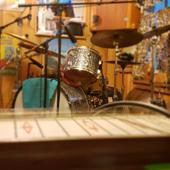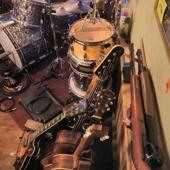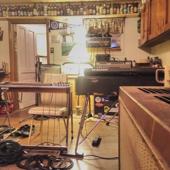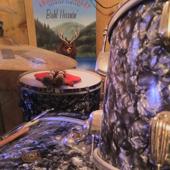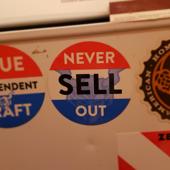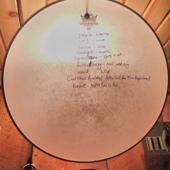Recording in the Land of the Wolves
Back in the Autumn of 2020, Josh contacted Bill and myself about recording some new tunes he'd been working on. The man puts out songs like the rest of us put out uninformed opinions. Bill suggested we do the recording at his hunting camp, and I had been thinking of how to modernize my aging recording setup, and thus a new recording project was born.
Step 1: The Portable Recording Rig
My goals, as usual, were to have the best quality I could, while pinching pennies and using what I had available. I did give myself a budget, though, since I didn't want to compromise on sound quality... it was definitely time to upgrade some of my rapidly-aging recording gear.
In the past, I've used a bank of preamps made by Presonus, the M80, and I liked how they sounded (especially for the price). We used it both for Idiosympathy's Overachiever in Love and for Josh's first solo recording way back in 2007. Unfortunately, I had sold the M80 after Idiosympathy broke up. Fortunately, just before this new project came up I spotted another one while poking around on Reverb.com, and this one had been upgraded to Jensen transformers. Wanting something for some basic tracking in my very small home studio, I snagged it and started playing with it. I figured it would be my baseline preamp for when I didn't have something better available. I also still had the MP20 from Jarred's bass rig, which Darren had upgraded with Jensens... so between the two units, we would have 10 solid channels of preamps from the get-go.
Then, after weeks of scouring eBay, somehow I managed to snag a pair of RME ADI-8 QS A/D converters for under 1/3 of what they usually go for... and in really good shape, too. I really could not have asked for better converters than these, especially not within my budget. The other missing piece of the puzzle was getting the digital audio from the converters into the PC, and for that I found a used RME HDSP AES-32 card which could do 32 channels of 192kHz audio (16 in and 16 out), the perfect pairing with the ADI-8s. I saved a bit of money on this, too, because my recording PC is old enough to have "legacy" PCI slots (back in my day, they were just called PCI slots), meaning I didn't have to shell out the extra $500 to get the PCIe version of the card. Thankfully, the RME cards have pretty good Linux support, so getting the setup working wasn't too tough. I spent more time scratching my head over my DB25 cables -- which as it turns out were wired one-to-one rather than crossed over like a proper AES/EBU cable -- than messing with drivers and such. One neat trick I'll share: I wrote a shell script that automatically adjusts the clock speed on the AES card to whatever Jack is running at. I had some trouble getting the clock to stay locked at 192kHz (which I suspect might have been due to a faulty daughter board ribbon cable), and I figured that was probably overkill anyway, so we recorded at 96kHz which was still the highest sample rate I'd ever used before.
#!/bin/bash
# Save this in your ~/bin folder and name it set-hdsp-clock.sh
# In QJackCtl Under Options > Execute Script on Startup, put the command:
# ~/bin/set-hdsp-clock.sh %r
SPEED_JACK=$1
case "$SPEED_JACK" in
"32000") SPEED_HDSP=0;;
"44100") SPEED_HDSP=1;;
"48000") SPEED_HDSP=2;;
"64000") SPEED_HDSP=3;;
"88200") SPEED_HDSP=4;;
"96000") SPEED_HDSP=5;;
"128000") SPEED_HDSP=6;;
"176400") SPEED_HDSP=7;;
"192000") SPEED_HDSP=8;;
*) SPEED_HDSP=5;; #Default to 96kHz
esac
#Set clock mode to "Master"
amixer -c 0 cset numid=3 0
#Set internal clock speed
amixer -c 0 cset numid=2 $SPEED_HDSP
Step 2: Uh... Build some microphones?
Since I haven't recorded much in the last few years, I ended up selling off some of my mics. Turns out selling equipment never seems to be worth it in the long run (Packrats: Unite!). I still have a small arsenal of SM57s, but I wanted a few other options for more specific uses: A good vocal mic, tom mics, a kick mic, a larger-diaphragm dynamic to put on a bass amp, small-diaphragm condensers for drum overheads, and of course any other types of mics that would be good for playing around with. Between Josh getting a couple of Sennheiser MD421s and borrowing mics from Darren, we were in pretty good shape with one exception: the drum overheads. I had heard of Microphone Parts before, and Darren has put together some of their kits. So I decided in line with my "pinch every penny" modus operandi, I would take a stab at their matched-pair small diaphragm SDC-84 mic kit. It was the first time I'd soldered anything quite that intricate, but I am really happy with the end result. Sure, I saved money compared to buying a pair of Neumanns, but it didn't feel like a compromise at all when it comes to quality... I quite enjoyed the build and they sound great. I'm really looking forward to using them more, someday when I have spare time again...
Step 3: Setup
The time had finally arrived, and Bill, Dale, and I spent a day getting all the gear unloaded and set up. It actually went faster than I'd expected, and we were making noise by the evening of the first day (a Friday) when Josh arrived after a long drive. We used the small bedroom as a control room, and the main room was where all the instruments were set up in a satisfyingly glorious mess.
Gear wise, it was a collection of all our most prized posessions. Bill's 1940s Radio Kings ended up being the primary kit used, though we swapped out snare drums a lot looking for different tones. Of course Josh had his Alvarez archtop and 12-string, and I had my ES-335, Tele, Strat, Rhodes, Dekley pedal steel, and my new-to-me Aerodyne bass which we ran through a Twin Reverb for a delightfully fat, retro sound. I also had along my Mod Duo pedal which we used for some huge B3 sounds using the setBfree plugin. I had taken some time to program my M-Audio keyboard controller with the proper MIDI CC's for controlling the drawbars, which was a lot of fun to mess with. Sometimes I wish I was a keyboardist.
Step 4: Preproduction
By day two, we were working on the tunes in a "scratch session", basically just one long session file where we just let the computer roll so we could jam and then go back to listen to ideas. I guess you'd call this "preproduction". From a demo of 18 songs Josh sent us, we whittled the list down to 5 we wanted to include for sure. Some of the tunes ended up being completely different from what he'd recorded on his own.
Step 5: Really Tracking
Then from Sunday through Friday, we did roughly one song per day, with some time for last minute additions on Friday and cleanup on Saturday. It's funny that this was the bulk of the time there, but it flew by the fastest. Let's just say there were many cases of Straub, Bell's, and Sierra Nevada involved (and of course a few partial Big Rail sixtel kegs, too... "inventory management").
Aside from making music every day the way God intended, I also thoroughly enjoyed waking up in the cold every day (we slept on the porch in January), shuffling inside to get coffee first thing, eating delicious camp food all week, sipping chaga tea made from an actual chaga mushroom Dale found while out hiking, hanging out by the fire outside when we needed a break, and at the end of the day, being lulled to sleep by the creek across the road and the smell of the woodburner (while being swaddled in a sleeping bag lined with an electric blanket).
Some Interesting Microphone Notes
Mic-wise, we ended up heavily using a room mic setup in mid/side setup because as soon as we started messing around with it, we instantly loved the warmth and depth we were getting. We didn't even end up putting up any acoustic dampening materials in the room. We used Josh's Blue Dragonfly in mid position, and Darren's S3-87 (also from Microphone Parts) for the side position because it was the only mic we had that could do a figure-8 pattern. The Dragonfly went through Josh's Avalon preamp, and the S3-87 went through Darren's Grace preamp. Everything we put this combo on just came to life, including the vocals, and especially Josh's 12-string acoustic.
As planned, I ran the drums and guitars through the Presonus M80. I was generally happy with the result, but maybe this would be an area for future improvement. I do like the ability to "dirty-up" the channels on the M80 via the IDSS knob... sometimes it helps certain instruments cut through a bit more though it can also make cymbals trashy in a hurry. Though nowadays most DAWs can do something similar in the box. If it were a more permanent studio setup, perhaps I'd incorporate the Auditronics 110 mixer (which is still in storage collecting dust, sadly). Again, the overheads sounded great, and of course you barely have to do anything other than stick MD421s on toms and they sound perfect. Also, an EV RE-20 was of course the perfect choice for the kick. It took a bit of precise positioning and very slight dampening to get the sound we wanted, but nothing out-of-the-ordinary.
What's next?
We were there a total of 9 full days. Now I'm working on mixing everything using Mixbus 32C and, as before, I'm enjoying the workflow and sound. I've got 3 of the songs in a pretty good place, but it's been hard to find time to work on them. The goal is to do the whole thing all over again, and try to get 5 more songs recorded, working towards putting together a full album. I'm not sure what Josh plans on doing with the songs then... he talked about maybe pursuing licensing them for use in movie soundtracks. Personally I'm happy to just be creating and recording again, and would be happy to just release the songs for download somewhere.
More artsy shots that didn't really fit anywhere else.
Modified Wednesday, February 19, 2025
